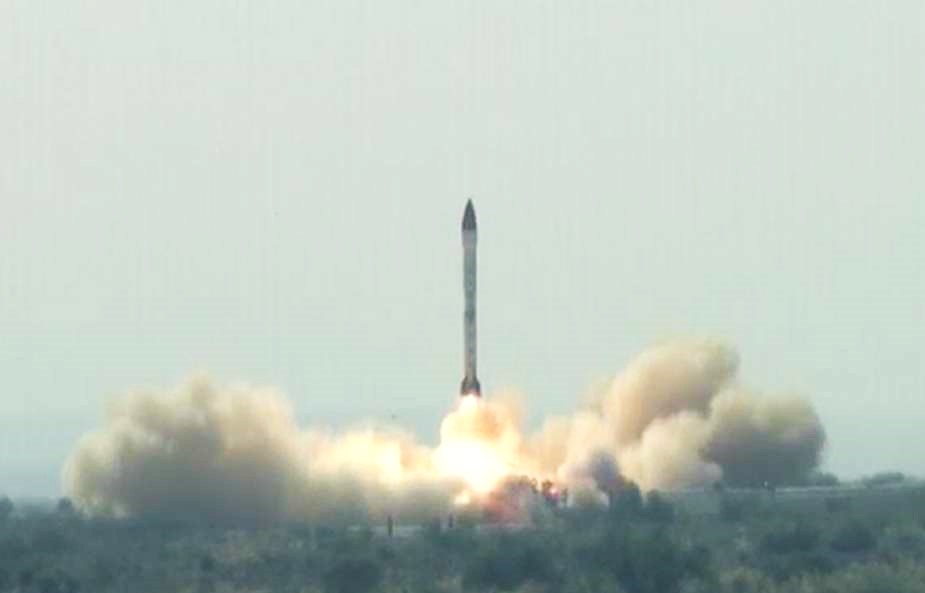Breaking news
Pakistan army successfully flight tests Ababeel ballistic missile.
On October 18, Pakistan successfully conducted a flight test of the Ababeel weapon system, as confirmed in a statement released by the Pakistani Inter-Services Public Relations (ISPR). This latest test of the ballistic missile system was undertaken to reaffirm various design elements, technical parameters, and the performance evaluation of different subsystems, as reported by The Express Tribune.
Follow Army Recognition on Google News at this link

Handout photograph shows the launch of Pakistan’s Shaheen-III surface-to-surface long-range ballistic missile, which can carry nuclear and conventional warheads within a range of 2,750 km (Picture source: screenshot of ISPR video)
The primary objective of the missile system is to bolster deterrence capabilities and enhance strategic stability in the region by operationalizing a full spectrum deterrence strategy within the framework of credible minimum deterrence, according to the military's media wing.
The launch was observed by Chairman Joint Chiefs of Staff Committee (CJCSC) General Sahir Shamshad Mirza, senior officers from the Strategic Plans Division and Strategic Forces Command, as well as scientists and engineers from strategic organizations. General Mirza commended the technical expertise, dedication, and commitment of all individuals involved in the successful test. Notably, the Ababeel rocket system boasts a range of 140 kilometers and possesses precision targeting capabilities.
The Ababeel Missile, also known as the Ababeel Weapon System, represents a medium-range, surface-to-surface ballistic missile with Multiple Independently Targetable Reentry Vehicles (MIRV) developed by Pakistan. Its primary purpose is to ensure the survivability of Pakistan's ballistic missiles in the face of a growing regional Ballistic Missile Defense (BMD) environment, primarily in response to Indian anti-ballistic missile systems.
Referred to as "the Ultimate Nuclear Missile" by The National Interest, the Ababeel missile system's intended role is to counter Indian Ballistic Missile Defense systems, potentially even being employed in a counterforce strike to neutralize India's nuclear arsenal before it can be utilized.
The missile itself measures 21.5 meters in length, has a diameter of 1.7 meters, and is designed to carry both conventional and nuclear warheads. Notably, it is South Asia's first MIRV-capable missile, with a maximum range of 2,200 kilometers (1,400 miles). It can carry a total warhead payload of 1,500 kilograms, which includes three standard warheads of 500 kilograms each, five warheads of 300 kilograms each, or a maximum of eight warheads, each weighing 185 kilograms.
The Ababeel missile system was developed by the Khan Research Laboratories (KRL), which had previously created the liquid-fueled Ghauri missile system. While it is widely believed to be a liquid-fueled missile, some sources suggest that Ababeel might be a modification of the Shaheen-III airframe with solid-fuel motors and an enlarged payload fairing to accommodate MIRV warheads. This modification may have resulted in a decreased range from 2,750 kilometers to 2,200 kilometers if indeed derived from the Shaheen-3 missile.
The first publicly announced test launch of the Ababeel missile system occurred on January 24, 2017.
Defense News October 2023























